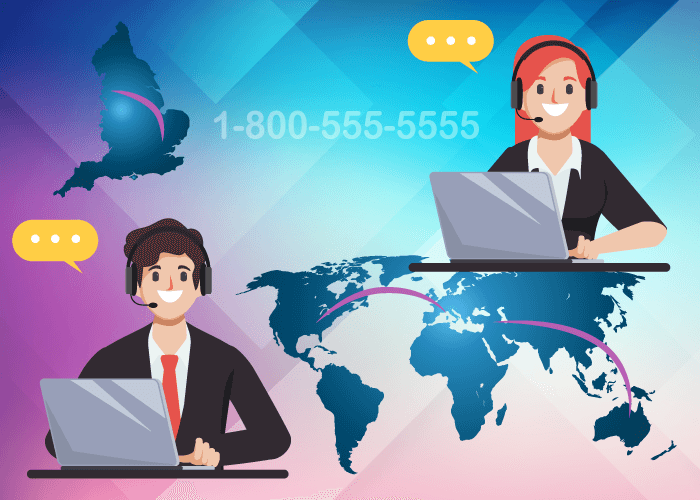Did you know that 3 million employees in the U.S. quit their job voluntarily every single month?
It’s not too surprising when you think about it. Many employers are unaware, or too busy to notice there are often company-wide bad habits that drive good employees to their competitor’s front door.
When workers don’t feel comfortable in a certain setting or are unhappy with their position, costly mistakes are more likely to happen. Instead, the focus needs to be placed on motivating employees at all levels, from interns to middle management and beyond. A truly successful enterprise is one that recognizes the importance of their workers and actively works to keep them. Not just for their talents and hard work, but their personal health and happiness.
Here are 7 different opportunities you can take advantage of to motivate your people in a positive work environment.
- Rewards and Incentives
If your workers have accomplished something worthy of a “job well done,” then say so with a reward. Recognition is one of the best ways to keep employees satisfied with their job. This is especially true if they’re recognized in front of coworkers. Here are some ideas of things you can reward them with to get started:
- Gift cards to a nearby restaurant or coffee shop
- Catered lunch for your team
- VIP parking spot for a week
- A “work from home” day
- A trophy or framed certificate
- Recognize and Address Problems
When employees speak up about a certain issue, it’s best to listen. This has to do with good communication. If your company communicates well, then workers feel listened to and cared for.
For instance, let’s say that one of your teams is asking for more training or tools to help them with tasks. Instead of saying “we don’t have a budget for this,” schedule a meeting with everyone involved to come up with an alternative solution. While it may be difficult to resolve every single problem they face, you must at least recognize their concern.
This is because even “small” problems can snowball into bigger ones in the future, so try not to ignore them for too long. This could result in a top employee leaving your company.
- Get Their Input
According to a 2005 study, “84% of highly engaged employees believe they can positively impact the quality of their company’s products.”
Have you ever gotten an employee’s opinion on a process? When workers are more involved and offer input, they are naturally motivated to see a project succeed.
So create a culture where employees are encouraged to participate. Ask them how they feel about certain policies and how things can be improved. You would be surprised how many of them have smart ideas already. Try to set up a monthly meeting where everyone can get together and spitball ideas.
Remember, be sure to do more than just listen. Support their ideas, allow them to implement them and have ownership of them as well.
- Create a “Trust” Environment
How often have you worked in an office where, if something went wrong, everyone would start pointing fingers? This is a direct reflection of upper management. When employees make a mistake, they become anxious about getting reprimanded and are less likely to be open about it.
Instead, hire managers and team leaders who are willing to foster trust. They should encourage values such as respect, honesty, and teamwork on a regular basis. This way, when a mistake is made, workers can feel confident about going to their leaders for support. They can also work together on a plan for preventing that mistake in the future.
- Give Them Room to Grow
When a person walks into a company interview, chances are you are going to ask the question, “Where do you see yourself in 5 years?” Well, how are you helping them get there?
Most people enter the workforce with a goal. Complacent or “bored” employees have short attention spans and are more likely to leave if their goals aren’t met. Regular training, new challenges, and bigger projects are just a few of the ways to support employees professionally.
Offer top workers a chance at real development in your company. Send them to a career fair or conference where they can grow their skills. Have a quarterly review where they can make their own recommendations for how they will grow over the next few months. As they develop into their roles, you are more likely to retain them.
- Celebrate With Them
This is more than just a birthday cake in the conference room. Recognize the importance of personal and professional achievement from upper management and C-level executives. Here are a few reasons to celebrate with your employees:
- A glowing customer review on your website as a result of service well done
- A new and successful product release
- Promotions and new hires
- Professional milestones, such as years of service
Additionally, acknowledging personal and professional milestones can be enhanced by offering thoughtful employee gratitude gift ideas, turning routine recognitions into memorable moments.
According to the TINYpulse Employee Engagement and Organizational Culture Report, “Nearly two-thirds of all employees report working at organizations that lack a strong work culture.” Being able to sit regularly with workers in a casual setting will go a long way in developing a culture they enjoy.
Not only that, celebrations enable employees to want to reach new milestones on their own.
- Be Flexible
Offices will have many strict rules about when employees can take breaks, how many days they can have off, and may even dictate acceptable times to use the restroom.
While having office “rules” to a certain extent is actually very healthy, workers should never have to feel worried or anxious about when they can leave their desk. This kind of burden does not offer them a chance to attend to their personal lives. And as a result, they end up quitting. Instead, work with them and put into place a flexible work schedule that meets their needs.
For example, you can explain that if certain deadlines are met, a team can work from home every other Friday. According to studies, “Companies that support remote employees“ have 25 percent lower employee turnover than companies that don’t.”







